Andy Bolton led a walk round Wildmoor, to the north-east of Basingstoke, on the afternoon of Sunday 22 September. There had been copious amounts of rain in the preceding 24 hours and the forecast was for more to come. But the forecast had been unduly pessimistic, because apart from some light drizzle and a single brief shower, the afternoon remained dry. The walk started out eastwards from a bend on Wildmoor Lane, heading first along a lane towards Wildmoor Farm, then along a footpath next to a deep gulley with Hart’s-tongue Ferns and Shield-ferns. The footpath led to a bridge over the River Loddon, which at this point was clear and fast-flowing. Bright green water plants on the river bed could be clearly seen. Water Mint and Water Forget-me-not were both in flower here. The walk continued along another footpath which followed the river bank southwards. A Kestrel flew overhead, and later a lucky few had a glimpse of a Kingfisher. Andy pointed out that the river was black and peaty along this section and no water plants could be seen below the surface. Plants growing on the river bank included Wild Angelica, Marsh Woundwort, Water Figwort, Brooklime, Common Fleabane, Amphibious Bistort and Gypsywort. A Migrant Hawker dragonfly patrolled along the river bank and a Banded Demoiselle was seen. Green-veined White butterflies which had been resting by the path took to the wing. A Burnished Brass moth was spotted by the path, with a large frog nearby. Two Herons drifted down the valley. A Scorpion Fly Panorpa germanica was photographed on nettles by the river bank.The path crossed the river again, and this time the water was clear as it flowed over gravel. There followed a high and rickety stile, the first of several on the walk. Further on, the path skirted a field of maize, where there were a selection of arable weeds, including Field Madder, Fumitory, Musk-mallow, Sun Spurge, Scarlet Pimpernel and Black Bindweed. A Nettle-tap moth was identified, a party of Long-tailed Tits fluttered through the hedge and a Green Woodpecker flew up. The hedge to the left of the path was laden with berries, including Guelder-rose, Spindle and Black Bryony. An area to the right of the path looked as if it had been planted with a seed mix for birds, with various unidentified grains. There were several Small White butterflies and a Red Admiral was also seen nearby. A Chiffchaff and a Raven called and there were flowers of Dwarf Mallow and Chicory. After crossing the river again, a hedge bordering the path had Hops scrambling through it. A Dark Bush-cricket was spotted on a Hazel leaf. The footpath ran past the back of the sewage farm. Then the tall, narrow, windowless building of the Chineham incinerator came into view. The footpath continued to a track bordered on one side by woodland. A hawker dragonfly patrolled up and down. Everyone waited patiently for the hawker to stop and perch, so that it could be identified – but it refused to cooperate and kept flying. It was agreed that it was most likely to be a Migrant Hawker. A Great Spotted Woodpecker flew up from the ground. The track led to a bridge where a Tree Slug was found on one of the wooden railings. As its name implies, this common slug is often seen climbing trees. The tracks then led back to Wildmoor Lane and a short stretch of road led back to the parked cars.
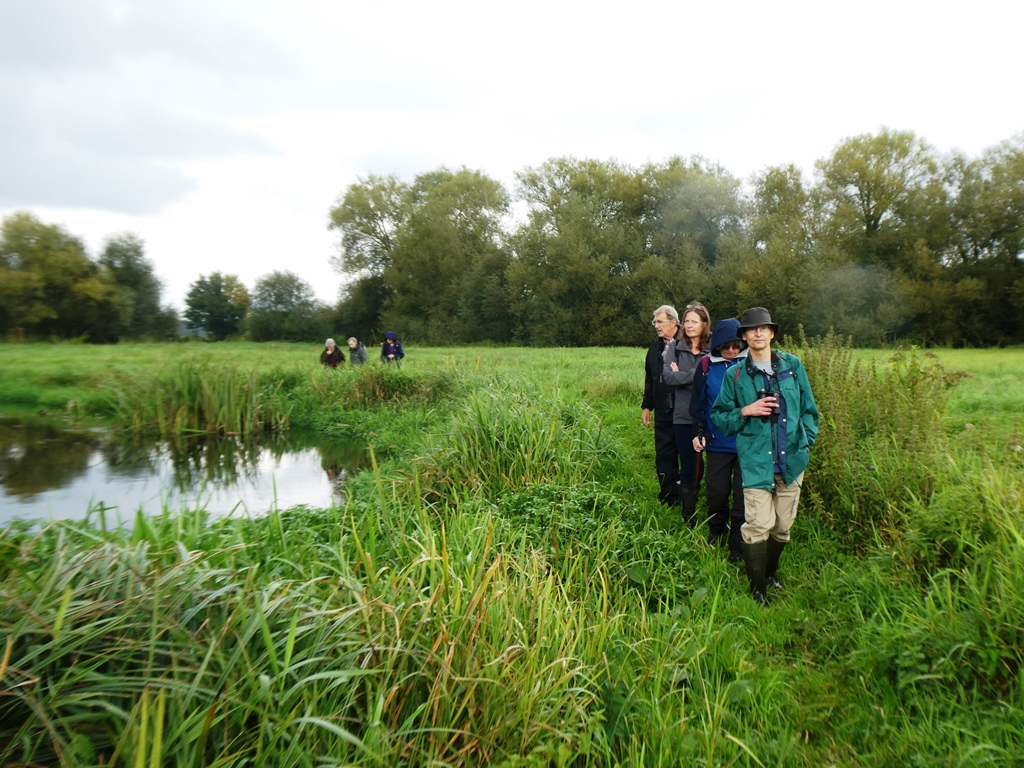
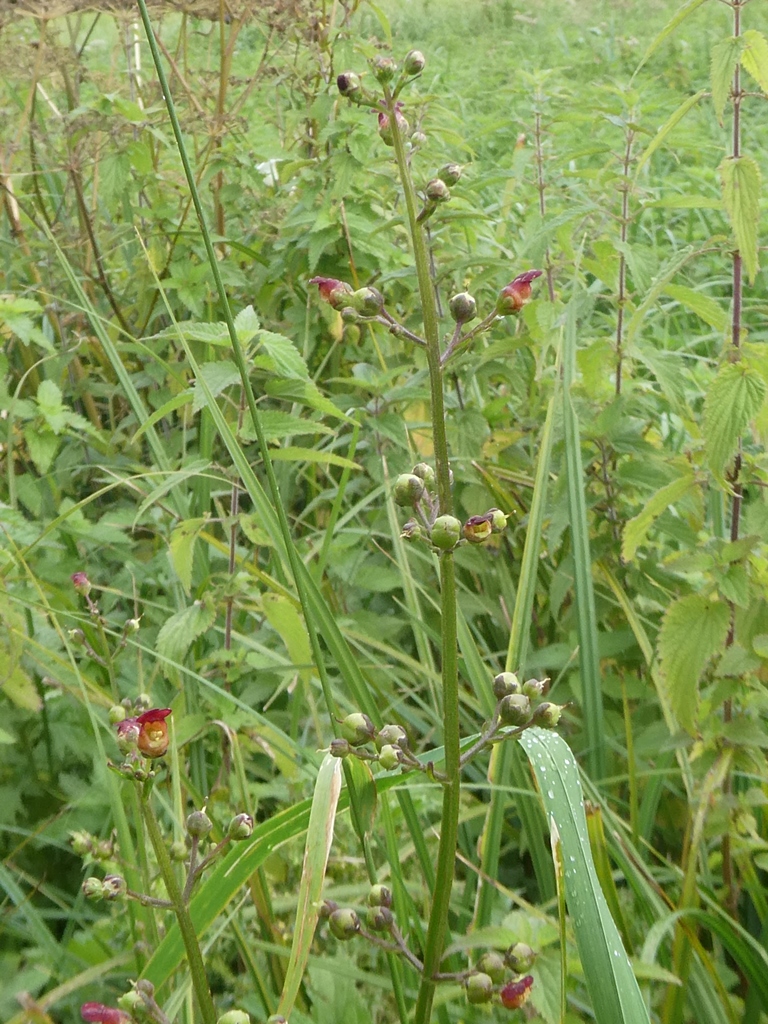
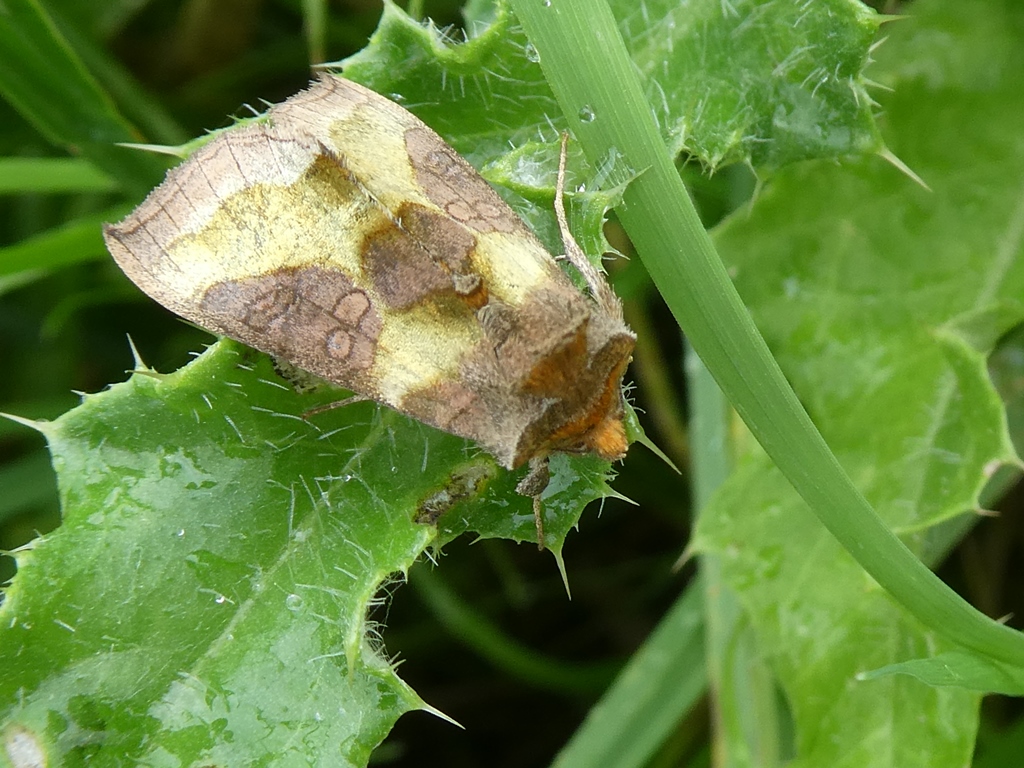
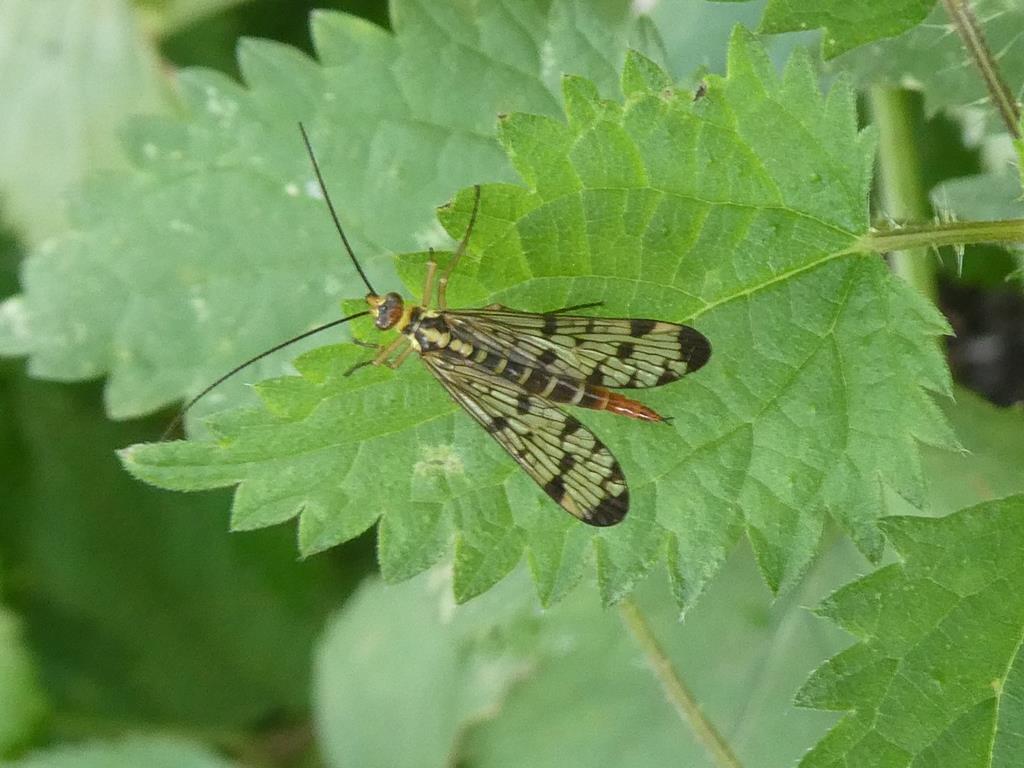

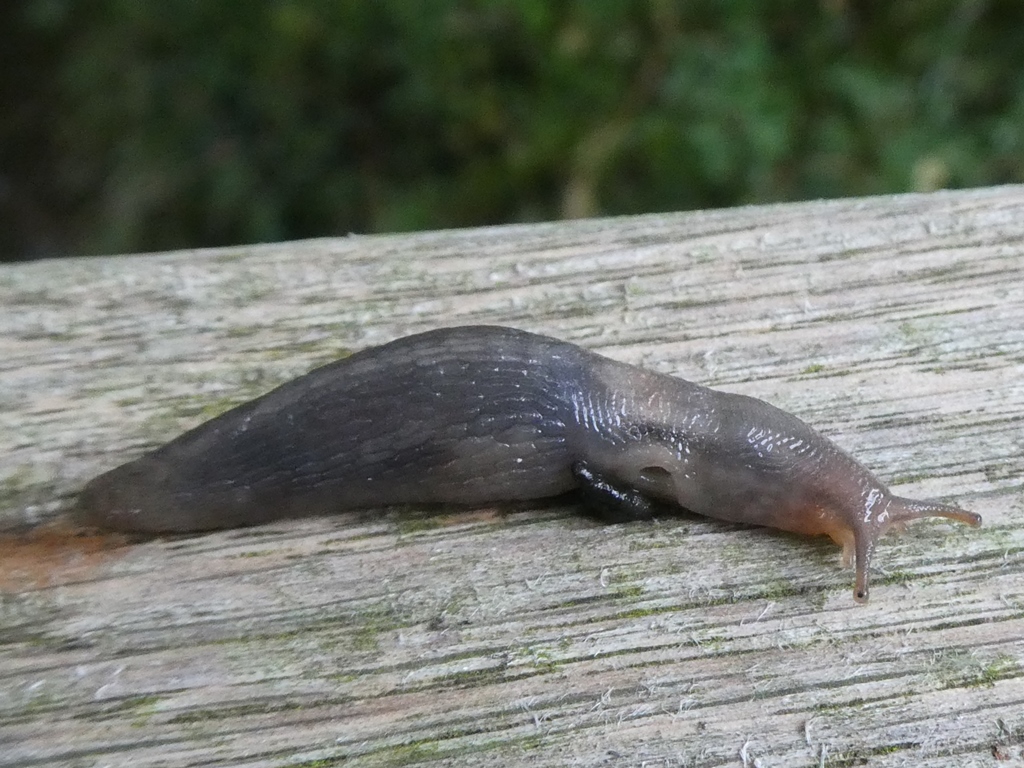
Pictures by Tom Walker
